|
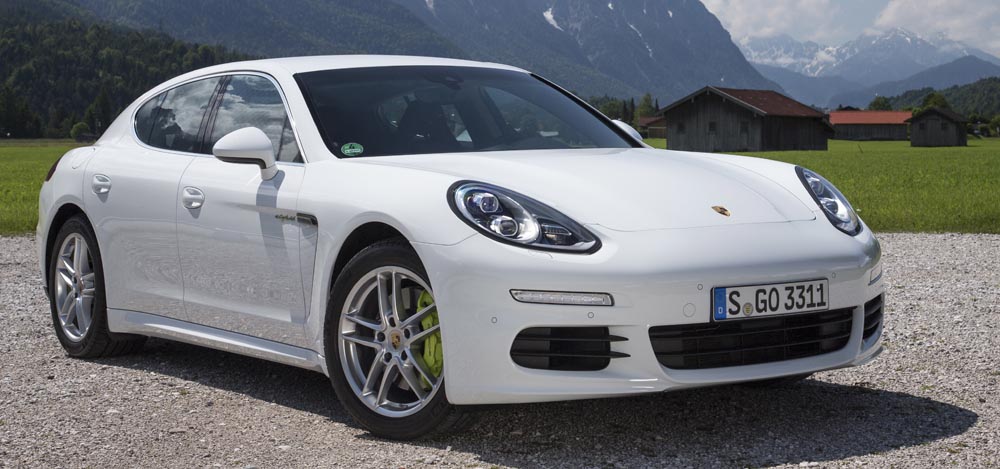
2014 Porsche Panamera
- New Plug-in Hybrid and Extended Wheelbase Variants Added to Revised Panamera Range
The Porsche Panamera sports sedan lineup is expanding for the 2014 model year with the addition of three new variants: the Panamera S E-Hybrid,
the first plug-in hybrid from Porsche; and two luxurious Executive versions for the Panamera 4S and Panamera Turbo models. The Executive versions
feature an extended wheelbase and 4S Executive models feature a completely new 3.0 twin-turbo V6 engine. With this launch, the Panamera line-up now increases to nine individual models.
The new Panamera S E-Hybrid improves upon the concept offered by the previous Panamera S Hybrid with a more powerful electric motor and a
higher-performance battery that supplies more energy and is able be recharged from home or public vehicle charging stations. The electric drive
produces 95 hp, more than double the power of the previous model's electric motor (47 hp). Electricity is stored in a newly developed lithium-ion
battery, which at 9.4 kWh has increased capacity over the previous battery (1.7 kWh). Via the integrated on-board charging componentry and the
standard Porsche Universal Charger (AC), the battery can reach full charge within approximately two and a half hours when connected to a 240V power source.
The Panamera S E-hybrid is capable of accelerating from a standstill to 60 mph in 5.2 seconds on its way to a top track speed of 167 mph.
The new Panamera 4S Executive and Panamera Turbo Executive models, which feature a wheelbase extended by 5.9 inches, allow even more rear seating comfort and come with an extensive range of standard features.
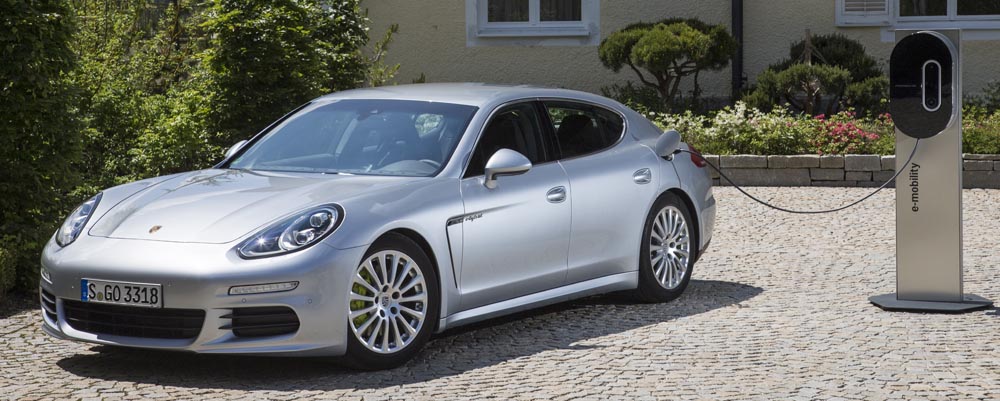
- Panamera S E-Hybrid sets new standards in efficiency, performance and operating convenience
Compared to the previous Panamera S Hybrid, the new Panamera S E-Hybrid features a more advanced parallel full hybrid system with a more
powerful electric motor, a higherperformance battery that supplies more energy and the ability to charge the battery externally from the electrical
grid. The electric motor produces 95 hp (70 kW), which is more than double the power of the previous model's electric motor at 47 hp (34 kW). It
draws its energy from a newly developed lithium-ion battery, which at 9.4 kWh has over five times the 1.7 kWh energy capacity of the previous
nickel metal hydride battery technology. When connected to a240 V outlet, it can be charged in around two and a half hours via the inte -grated
on-board charger and the standard Porsche Universal Charger (AC). The Porsche Universal Changer can also be plugged intoa regular household 120 V socket.
The Panamera S E-Hybrid far exceeds the driving performance of the previous model and will offer improved fuel economy when compared to the
previous Panamera S Hybrid. At the same time, its all-electric driving performance was substantially improved in regard to electric acceleration,
electric range and electric top speed. An intensive pure electric driving experience is possible without any fuel consumption or local emissions, which
is especially advantageous in the urban environment. The Panamera with the new hybrid drive can reach top track speeds of up to 83 mph in electric mode.
The Panamera S E-Hybrid drivetrain combines an internal combustion engine and electric motor, which are mechanically joined to the transmission, as
on the previous model, to ensure quick acceleration and impressive power in the city or on the highway. Acceleration time from a standstill to 60 mph
was shortened by half a second to 5.2 seconds, compared to the previous Panamera S Hybrid. An improved electric boost function is responsible for
the performance increase, in which the electric motor boosts the combustion engine. Boosting can also be activated by a kick-down switch in the
accelerator pedal and is especially useful in overtaking situations. The car's top track speed is 167 mph. The parallel full hybrid concept developed by
Porsche also offers "coasting" at higher speeds, which allows the engine to turn off to save fuel and engage the energy recovery system, which restores electricity to the lithiumion batteries.
Each Panamera S E-Hybrid comes standard with extensive charging equipment. This equipment includes the aforementioned mobile Porsche Universal
Charger (AC) with two power cables for 120 V and 240 V electrical outlets and a charging dock that can be installed on a wall.
The advanced technology of the Panamera S E-Hybrid also embodies an entirely new range of convenience functions, several of which can be
activated and controlled via a smartphone app. The Porsche Car Connect app can be used to remotely monitor charge status, remaining driving
range, activate the climate control for preheating or cooling of the interior, and even show users the location where the Panamera is parked. Other
functions not specifically related to the hybrid drive are also available as options for the other Panamera models via the Porsche Car Connect smartphone app.
- Long wheelbase Executive models create a more spacious rear seating area
The layout concept of the Panamera, with two full-sized rear bucket seats, proved to be so successful that Porsche is further extending it in the new
generation Panamera. Two new Executive models, with an additional 5.9 inch longer wheelbase, offer more rear seating space and increased leg
room. These models include additional standard equipment; above all they offer exceptional comfort for all rear seat passengers. All Executive models
feature air suspension with PASM, which combines excellent ride adjustability and improved handling performance.
- More performance and efficiency by downsizing: new twin turbo V6 engine
Boosting performance and efficiency is a core philosophy at Porsche. In developing the new Panamera, this led to an entirely new Porsche developed
engine based on the concept of downsizing and boosting. The new 3.0 liter V6 engine with twin turbochargers replaces the previous 4.8-liter V8
engine in the Panamera S and Panamera 4S, and it is also used in the new Panamera 4S Executive. It offers an additional 20 hp and 15 lb.-ft. of
additional torque, with an increase in fuel economy compared to the V8 engine in the pre vious model. The driver gets a more powerful and efficient
engine by turbocharging, resul ting in 384 lb.-ft. of maximum torque from 1,750 to 5,000 rpm for a superior and uniform torque curve, even at low engine speeds.
Most Panamera models are equipped with the seven-speed Porsche Doppelkupplung PDK. The eight-speed automatic Tiptronic S transmission is used
in the Panamera S E-Hybrid. These transmissions create optimal conditions for the development of other efficiency functions. For example, the Auto
Start-Stop function now deactivates the engine earlier when coasting to a stop, which saves more fuel. With the exception of the Panamera GTS;
models with PDK also offer a coasting function in which the engine decouples from the PDK, the engine idles and the vehicle coasts freely. This
function can significantly improve real world fuel economy, especially on the highway.
Design revisions
The newly refined exterior design of the Panamera is highlighted by a tighter and more prominent front fascia, featuring larger air intakes and a more
distinctive transition to the headlights. When viewed from the back, the new generation Panamera is distinguished by its revised power lift gate and
widened rear glass that emphasizes the horizontal aspects of the sport sedan. This effect gives the Panamera the visual appearance of a lower
stance on the road. This concept is reinforced by integrating the license plate bracket lower in the rear bumper. The rear body section features a
wider spoiler and a tighter transition to the rear lights, similar to the visual transition of the headlights at the front of the car.
As in the previous generation, the new Panamera models have many differentiating exterior characteristics. The colors of the brake calipers are
associated with the specific engine and the most significant identifying characteristics are the uniquely shaped front-end components and
model-specific tailpipes. Further customization is achieved by the many options that are offered, including new LED headlights, which give the
Panamera a very special appearance. The LED headlights are paired with the intelligent Porsche Dynamic Light System Plus (PDLS Plus). The design
of these headlights is fundamentally different from the standard bi-xenon version. The headlights are comprised of two LED units, one placed above
the other, while the running lights and turn signals are relocated to the front bumper.
In addition, an extended line-up of assistance systems is available for safety and convenience. The optimized adaptive cruise control system, for
example, now actively intervenes in the braking process in hazardous situations and lane departure warning offer greater convenience in all driving situations.
- Innovative Porsche plug-in hybrid drive in the Panamera S E-Hybrid
The Panamera S E-Hybrid combines efficiency and sportiness with a combined power out - put of 416 hp (306 kW) and the ability to accelerate from
0-60 mph in 5.2 seconds. The new Panamera S E-Hybrid improves upon the parallel full hybrid drive system of the previous model and adds plug-in
technology. The car's external charge port enables charging of the battery from the electrical grid. The Panamera S E-Hybrid stores this energy in a
newly developed lithium-ion battery and its more powerful electric motor converts this energy with significantly improved driving performance and longer driving range than before.
For the driver, the new battery and new electric motor mean significantly better electric driving performance: All-electric top track speed is 84 mph.
Final U.S. EPA fuel economy ratings will be available closer to launch. Electric-only driving is possible without any fuel consumption or local emissions,
which is especially advantageous in city driving. The electric driving range of the Panamera S E-Hybrid is estimated to be greater than 20 miles based
upon current NEDC testing. Driving range may vary in real world operation, due to the effects of environmental conditions, terrain, air conditioning
and heating use, driving style and other factors. The interplay of the V6 engine and the high torque of the electric motor enables impressive torque
at low engine speeds, ideally complementing the internal combustion engine that develops its full torque at higher rpms.
The innovative E-Hybrid drive concept of the Panamera S E-Hybrid can be seen from its exterior. Use of the accent color Acid Green is subtle, but
clearly highlights the "e-hybrid" logos on the front doors, and the "Panamera S" model badge at the rear. The brake calipers are also painted in this
color and provide additional differentiation from the conventional S model. The needles of instruments in the instrument cluster and of the optional Sport Chrono clock are designed in Acid Green as well.
- More energy and power: New Lithium-ion battery and electric motor
A newly engineered high-voltage battery based on lithium-ion technology with an energy capacity of 9.4 Kilowatt-hours can store over five times the
amount of electric energy as the nickel metal hydride battery in the previous model, and yet it does not require any more installation space. As
before, it is integrated in a space-saving manner beneath the rear luggage deck. However, the great advantage of lithium-ion technology is not just
its high energy density. Its power density is also greater, and this enables a high level of electric performance. The battery is maintenance-free.
The Panamera S E-Hybrid exploits the multiplied supply of electric energy in its more advanced electric motor. Its short-term peak power of 95 hp (70
kW) is over double the peak power in the previous Panamera S Hybrid of 47 hp (34 kW). This was primarily attained by increasing the number of
windings on the electric motor's stator coils and adding new power electronics, which increased voltage from the previous 288 Volt to 360 Volts. A
modified magnetic material in the rotor's electromagnetic circuit with optimized cooling channel geometry also led to an improvement in thermal load
capacity. This has all enabled a higher maximum torque of 229 lb.-ft. (gain of 8 lb.-ft.) which is available from zero to 1,700 rpm. Despite the
substantial improvement, the dimensions of the electric motor are no larger, so it can easily be mounted in the existing installation space.
- Three driving modes for customized use of the electric drive
The Panamera S E-Hybrid offers special driving modes that give drivers better every day driving utility. The driver can select them individually to
exploit the strengths of the individual hybrid driving states. The E-Power mode enables pure electric driving without having to start the internal
combustion engine. Moreover, it is possible to charge the high-voltage battery while driving via the E-Charge mode. Another driver selection option is
the Sport mode which offers typical Porsche performance and a sporty accelerator pedal characteristic for more direct response.
Hybrid-specific indicators in the instrument cluster and in the optional Porsche Communication Management (PCM) communicate key information to
the driver at all times. The new Power Meter replaces the analog tachometer and informs the driver of the drive power and electrical system
recuperation power of the hybrid system. Digital speedometer values are still continually shown in the display of the central round instrument. The
Power Meter also communicates other useful information to the driver such as system readiness when the ignition is switched on (Ready indicator),
an efficient or especially sporty driving range (efficiency range or boost range) and the activation point of the internal combustion engine when greater power is demanded.
- Intelligent charging strategy reduces costs and increases everyday utility
The Porsche Universal Charger (AC) is a standard feature of the Panamera S E-Hybrid, and it is used to connect the vehicle to the electrical grid. The
attractively styled charger from Porsche Design includes two standard power cables, one for 120 V household electrical outlets and the other for
plugging into 240 V electrical outlets. Depending on the available connection, the customer can instantly switch charging cables depending on the
outlet of the power source. Depending on the type of power connection, the Panamera S E-Hybrid may be charged in just around two and a half
hours (at 15 Amps). Also included as standard equipment is a Porsche Design charging dock that is used to conveniently mount the uni - versal charger (AC). The charging dock can be installed in the customer's residence.
From the exterior, the plug-in concept of the Panamera S E-Hybrid can be identified by the charging door on the left rear side panel; the vehicle's
electrical port for charging the lithiumion battery is located behind this door. The on-board charger for voltage regulation and converting AC to DC
power is installed in a space-saving location in the right side wall of the trunk area; it outputs up to 3.6 kW. Two LED lights integrated in the charge
plug inform the user of the charge state of the lithium-ion battery and the connection status. There is also a departure timer for setting the timing of
the charging process. Up to three target times can be programmed via the instrument cluster. Then battery charging is per formed so that the
battery is fully charged at the defined time point. One benefit is that less expensive night-time electrical power rates might be used.
- Unique comfort: remote control by Porsche Car Connect smartphone app
With the new Panamera, Porsche introduces remote control of the vehicle via a smartphone app called Porsche Car Connect, which satisfies growing
customer needs for connectivity. In the Panamera S E-Hybrid, the networking of vehicle and driver via a smartphone plays a special role, because it
makes special functions such as external charging of the high-voltage battery more transparent. The driver can access and control key information
about the vehicle using the app, including battery charge status with remaining charge time and the current driving ranges for both electric driving
and combustion engine driving. The electric driving range is also shown on a navigation map. The "Charge timer" function can be programmed to optimize electricity costs.
In the Panamera S E-Hybrid, electrification of the climate control system has created the right conditions for another option: auxiliary climate control.
The charge timer may be used to activate the climate control system so that the passenger compartment has the preset desired climate at a
planned departure time. The vehicle interior is either heated or cooled accordingly to 73 degrees. In the winter, heating power is also generated by an auxiliary high-voltage heater.
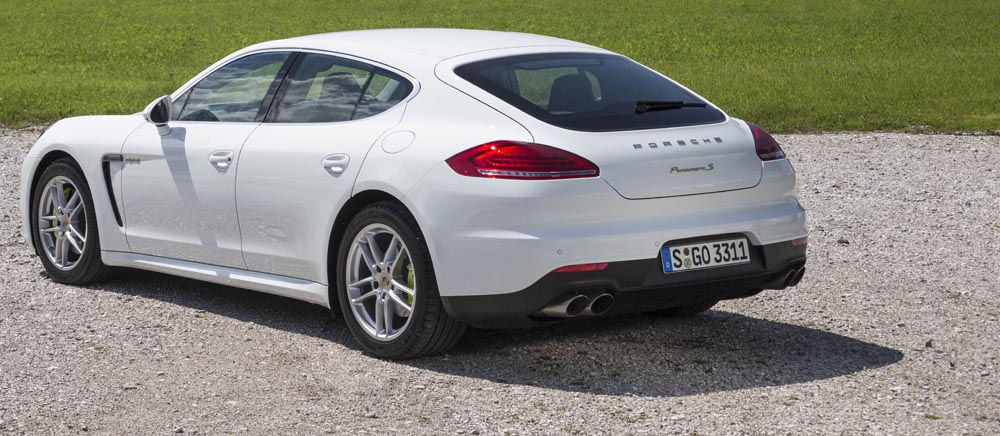

The new Panamera Executive models
Panamera with long wheelbase offers maximum comfort
Porsche developed the Executive models for customers who have especially high standards for space and ambience combined with Porsche
performance. The wheelbase and passenger compartment were extended by 5.9 inches, and both of these dimensions directly benefit comfort in the
rear seating area, since the body was extended behind the B pillar. For one, this means larger doors for more comfortable entry and more leg room for
the rear passengers. Porsche offers two Executive models: The Panamera 4S Executive and the Panamera Turbo Executive. Power transmission is
handled by the Porsche Doppelkupplung. The all-wheel drive Porsche Traction Management (PTM) system ensures the best possible traction at all
times. The chassis was also systematically tuned for an impressive level of comfort while maintaining typical Porsche performance characteristics. It features a standard air suspension and the PASM active damper system.
The exteriors of the Executive models give an impression of understated elegance and are highlighted by numerous standard features. For example, a
standard automatic soft-close system draws the doors gently into their locking mechanisms with servo support. Low-noise and thermally insulated
window glass ensures a pleasant ambience in all outdoor conditions. The electric slide/tilt glass moon roof extends climate comfort, and park assist simplifies car handling.
In the interior, passengers can expect an all-round comfortable ambience. Interior space was increased by six additional degrees of adjustment angle
on the rear seat backrests and by a 4.7 inch longer foot area that offers more leg room. The standard comfort seats at the rear with comfort head
restraints are individually adjustable, including electric four-way lumbar support that features both an electric backrest adjustment and electric longi
tudinal seat adjustment. A pleasant ambience in the rear seating area is provided by a lighting package that focuses on the rear passenger
compartment; it features footwell illumination, illuminated door storage bins and dimmable lighting in the roof console. It also offers passengers two additional reading lights.
The standard three-stage control of seat heating and seat ventilation, with separate front and rear control, assures seating comfort that can be
optimally adjusted year round. The four-zone automatic climate control system provides a high level of personal travel comfort with climate zones
that are individually adjustable at each seating location. Besides offe ring additional storage space and an armrest, the large center console also has
a 120 Volt accessory power point. This lets rear passengers charge electronic devices during the drive. Electric roll-up sun blinds for the side
windows and the rear windscreen offer additional sun protection and privacy as needed. The Panamera Executive models are further differentiated by
"executive" signatures applied in the rear seating area and on the brushed aluminum door sill guards. The interior is rounded out by leather upholstery in one of five standard colors.
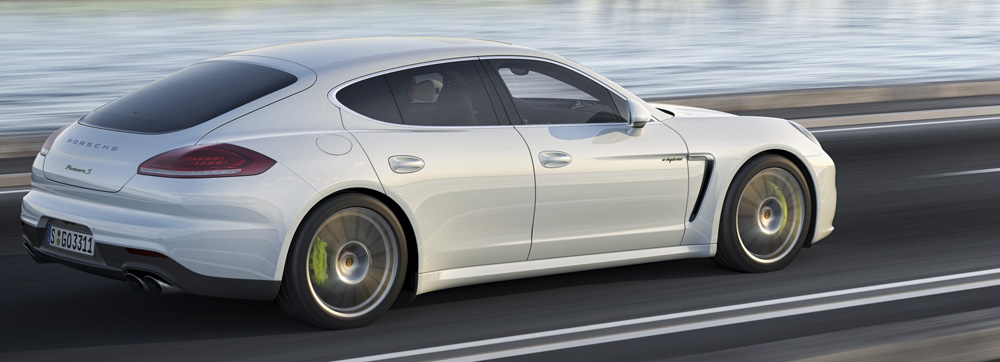
Engines and Drives
Greater performance and efficiency
Even the first generation of Panamera models set benchmarks for performance and vehicle dynamics in their class. Twin turbo chargers let the new
engine develop five percent more power at 420 hp. The redesigned Auto Start-Stop function now ensures that the vehicle stops the engine earlier
while coasting to a stop at a traffic light or intersection. The new coasting function of the PDK in the Panamera enables decoupling of the engine from the transmission, which results in nearly resistance-free gliding.
- The new twin turbo V6 engine for Panamera S and Panamera 4S
Porsche developed an entirely new engine for the new generation Panamera S and Panamera 4S. Systematic downsizing has resulted in an engine
with two fewer cylinders. It is closely related to the 3.6-litre V6 in the Panamera and Panamera 4, but its displacement was reduced to 3.0 liters.
Twin turbo chargers let the new engine develop five per cent more power at 420 hp. The new engine also impresses with an improved torque curve;
maxi mum torque of 384 lb.-ft. is available between 1,750 and 5,000 rpm, which offers instantaneous torque in most driving situations.
To preserve the balance and smoothness of the new 3.0 liter V6 twin turbo engine for the Panamera S and 4S on the same high level of the
eight-cylinder engine in the previous model, a balance shaft offsets the imbalances caused by moments of inertia inside the engine. Compared to the
Porsche V8 engines, the crankshaft has a shorter stroke, this makes the engine very rev-friendly. Two fast-responding turbochargers feeding the
engine compress air to as much as 17.4 psi (1.2 bar). Two intake valves per cylinder with different strokes ensure that the air flows into the
combustion chambers in the most efficient manner possible for complete combustion, resulting in improved performance and efficiency. The VarioCam
Plus intake camshafts also have variable timing and adapt the valve stroke to engine load and speed. The new V6 twin turbo is also the first V engine
from Porsche to have camshafts with variable timing on the exhaust side. Fuel delivery is handled by a new fuel injection system with 2,900 psi (200 bar) high pressure and direct injection via multi-hole injectors.
- All Panamera models have reduced fuel consumption
All Panamera models are launching into a new generation with greater efficiency and more power. The power of the V6 engine in the Panamera and
Panamera 4, increased 10 hp to 310 hp. Engine power of the naturally aspirated V8 engine in the sporty Panamera GTS also increased 10 hp to 440 hp and it accelerates the car from zero to 60 mph one tenth of a second faster.

Sportiness and comfort
More comfort with new options
The interior of the new generation Panamera unites sports appeal and comfort with four bucket seats and variable cargo space for a high level of
everyday utility. The new two-tone combination of black/carrera red emphasizes the sporty character of the vehicle. Compared to previous two-tone
features, the combination now has a modified distribution of colors. The footwell and the back sides of the front seats are upholstered in black, while
the rest of the interior is carrera red. Furthermore, the previous platinum grey is being replaced by agate grey as the interior color for standard and leather upholstery.
- Seeing better: new LED headlights with PDLS Plus
Bi-xenon headlights are now standard for all new Panamera models. As an alternative, Porsche is offering LED headlights as an option for the first
time. This package consists of the Porsche Dynamic Light System Plus (PDLS Plus) with high and low beam headlights as well as an auxiliary main beam and four-point daytime running lights in LED technology.
The dynamic high beam headlight system detects the light sources of oncoming vehicles and vehicles ahead of the car via a camera that is mounted
at the base of the rearview mirror and continually adapts the lighting range between low beam and high beam. This optimally exploits lighting
potential without blinding other vehicles in traffic. At a lit intersection, the system recognizes the intersecting roads and merging lanes stored in the
navi -gation system, and it activates the static cornering lights for optimal illumination accordingly, either the left or right light or both
simultaneously. Visually, the LED headlights differ consi - derablyfrom bi-xenon headlights. Instead of a cone-shaped light housing with round pro -
jection lenses and auxiliary lamps with visible reflectors, the LED headlights consist of two tubular light stacked on top of each other with lens contours sculpted at the top and bottom.
- Porsche Car Connect App: connecting to the Panamera by smartphone
Porsche is now introducing access to various vehicle information and functions via a smart - phone with its new Porsche Car Connect app. Porsche
Car Connect is available as an option for all new Panamera models and as a standard feature of the Panamera S E-Hybrid. The services that are
offered can be subdivided into three categories: Remote Services, Porsche Vehicle Tracking Services and hybrid-specific E-Mobility Services. Remote
Services is used to access vehicle information for any Panamera model such as the odometer reading, re -maining driving range or vehicle location
and is free for six months. The app also lets users control various vehicle functions such as folding of the door mirrors.
- New assistance systems based on camera and radar
Two new optional camera-based assistance systems are lane departure warning and Surround View. The lane departure warning system detects lane
markings and warns the driver by signal tone if the vehicle inadvertently leaves the driving lane. The system becomes active at a speed of 40 mph, and it can be deactivated by a separate pushbutton on the center console.
Surround View refers to a 360 degree view of the surroundings; it transmits images from four high-resolution cameras to the PCM monitor. The
system assists in maneuvering the vehicle by displaying a realistic photographic view of the vehicle's surroundings as a top view of the vehicle. It
offers many different detailed views that simplify maneuvering in specialsituations – such as approaching a curb, driving out of narrow driveways and in front of obstacles.
The adaptive cruise control system with Porsche Active Safe (PAS) is based on radar detection. It regulates the preset vehicle speed and distance
to vehicles ahead. In addition, when approaching a vehicle ahead too fast, PAS uses an acoustic and a visual signal as well as a brake jolt to indicate
the need for intervention. If the driver reacts with insufficiently strong braking, the system boosts the brake pressure according to the situation – within technological limits and up to hard braking.
The new Panamera models will be available in the U.S. starting late in 2013. Panamera Turbo S and Panamera Turbo S Executive variants will be available in 2014. Pricing details are as follows:
- Panamera.......................................$78,100
- Panamera 4.....................................$82,800
- Panamera S....................................$93,200
- Panamera 4S....................................$98,300
- Panamera S E-Hybrid........................$99,000
- Panamera GTS.................................$113,400
- Panamera 4S Executive.....................$125,600
- Panamera Turbo...............................$141,300
- Panamera Turbo Executive.................$161,100
*Base pricing does not include options, taxes, dealer charges and a destination fee of $975.
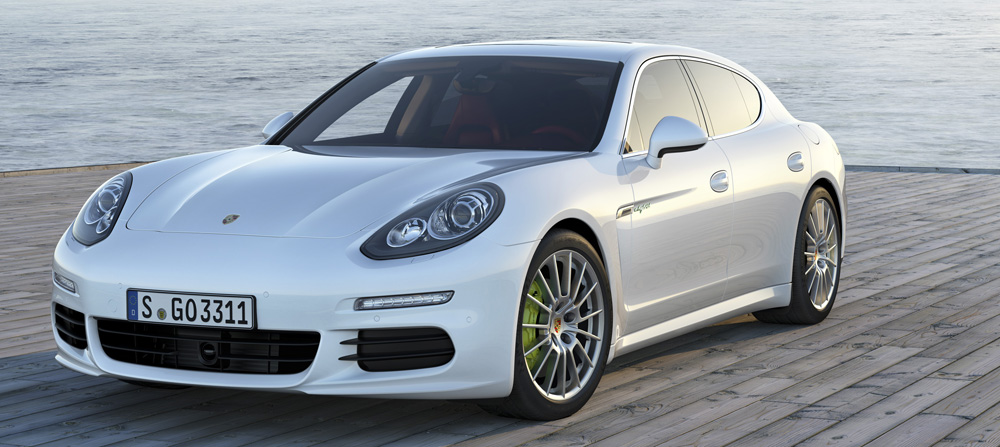
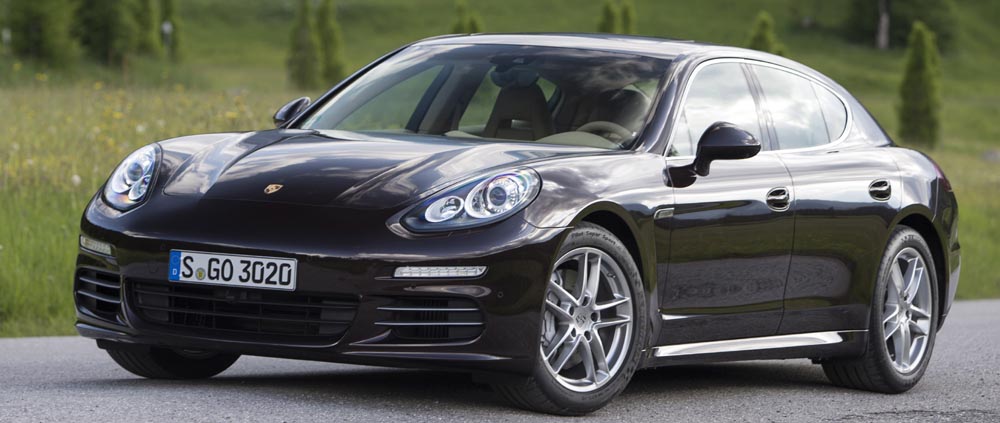
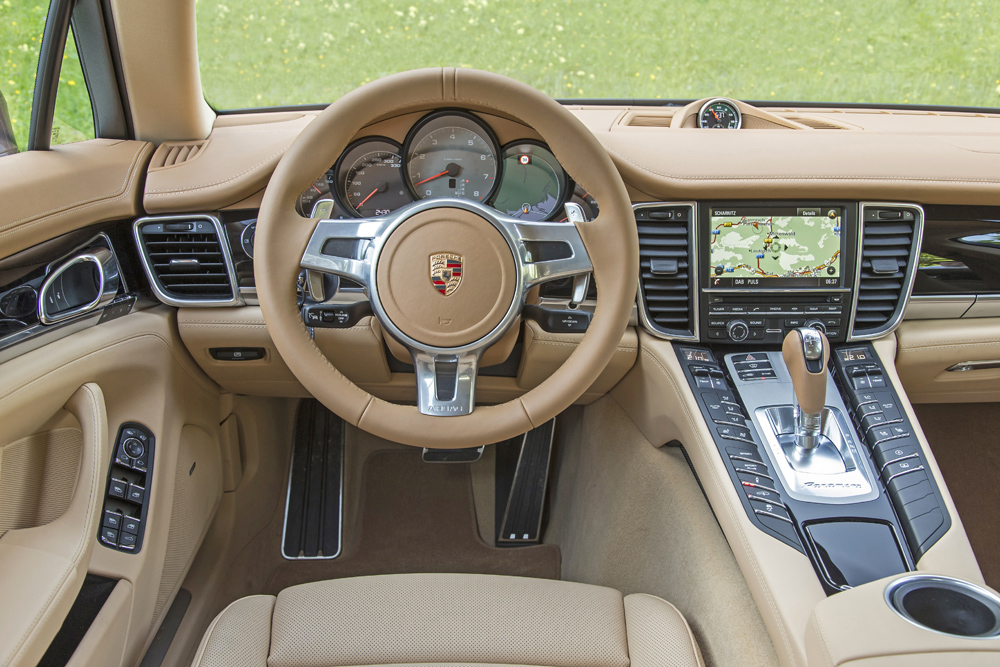
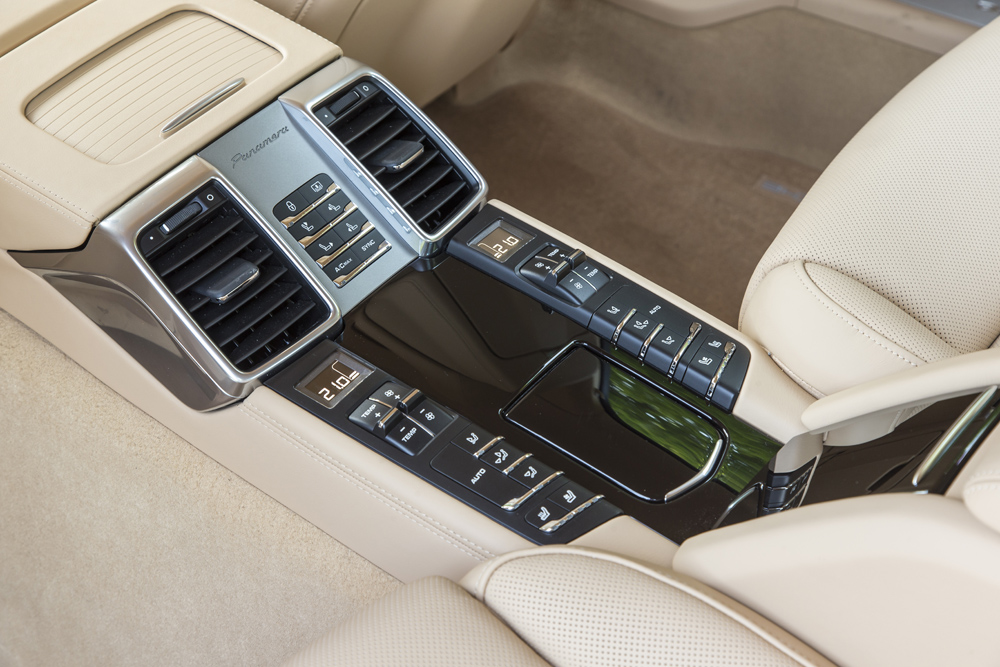
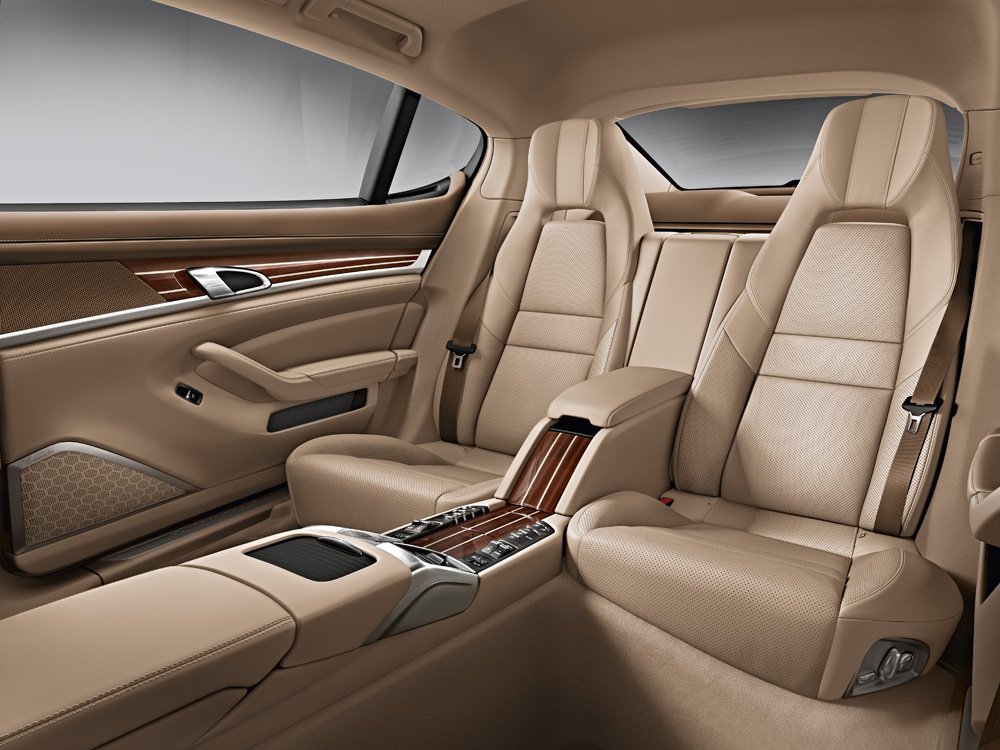



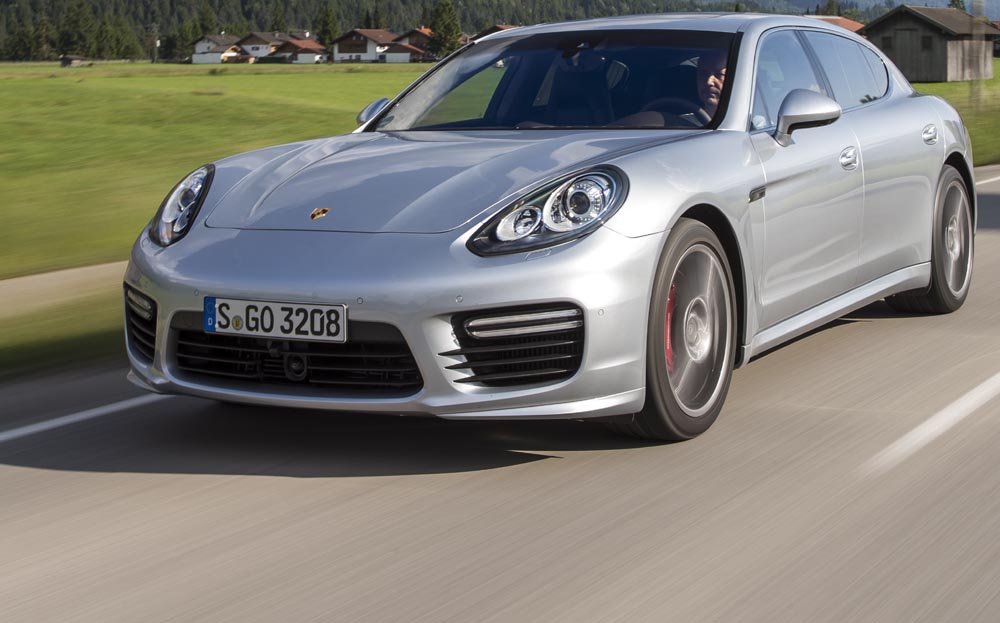
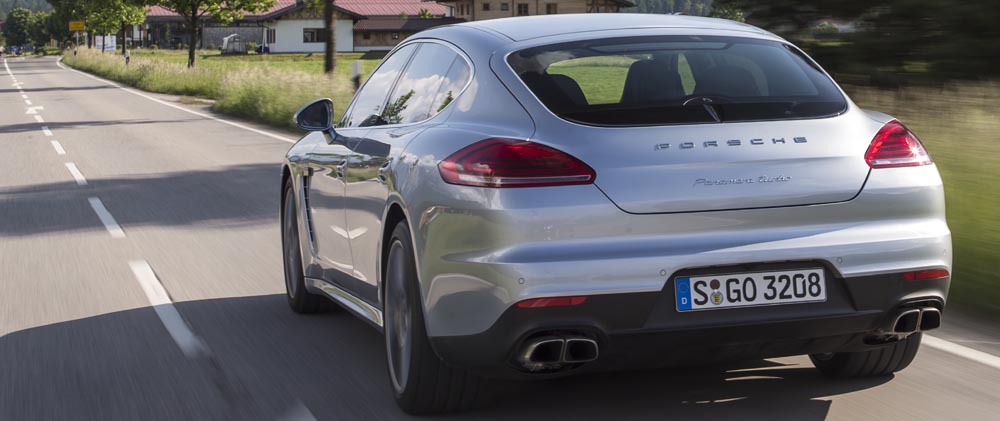

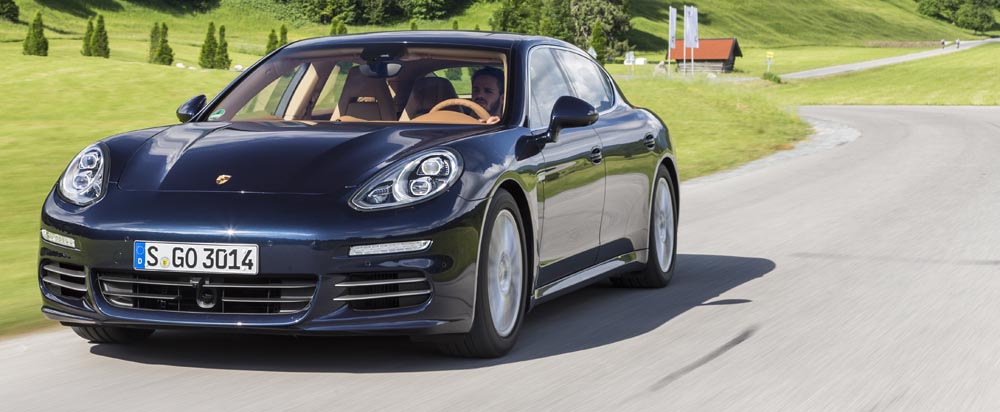
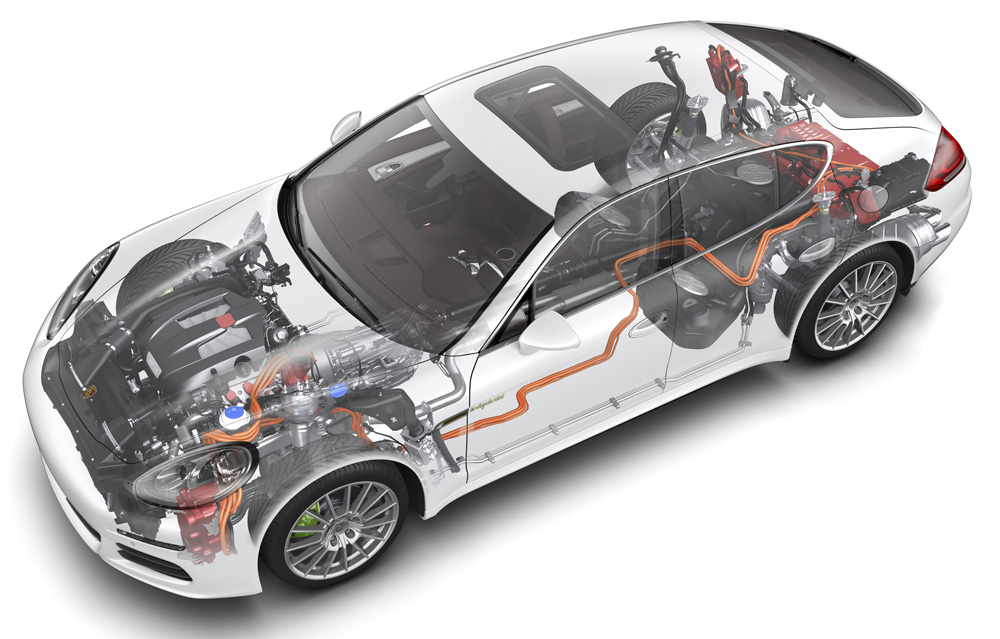
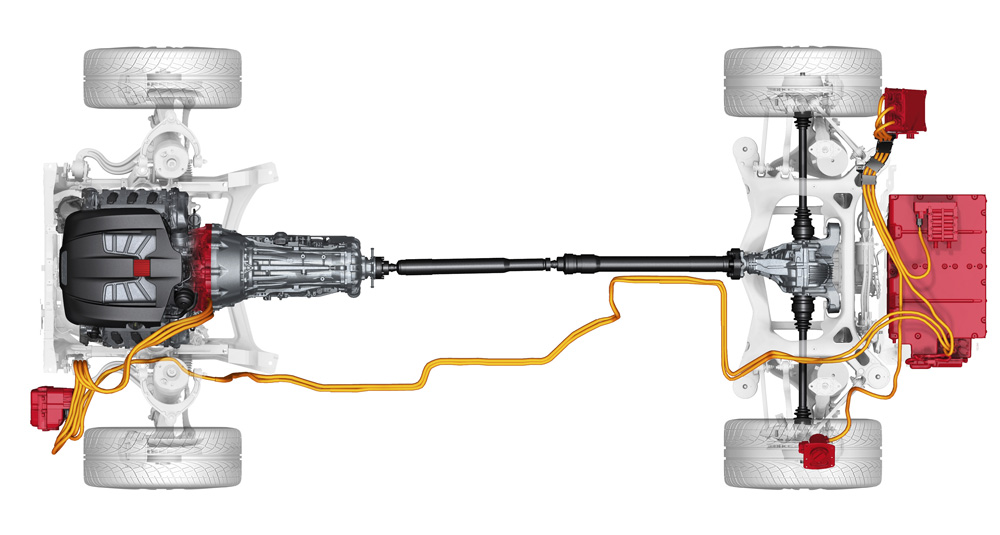
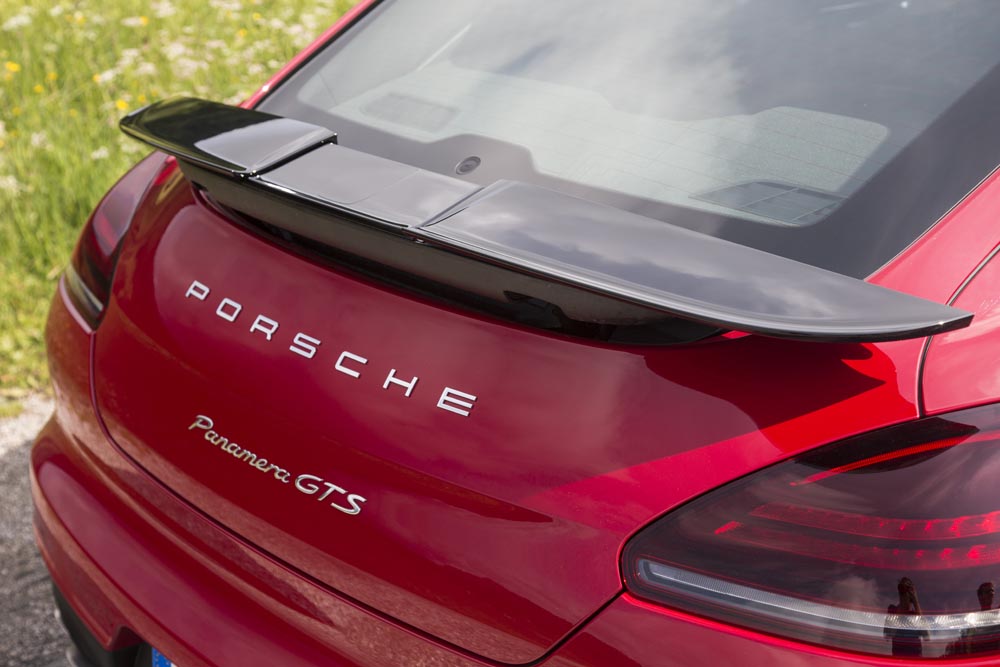
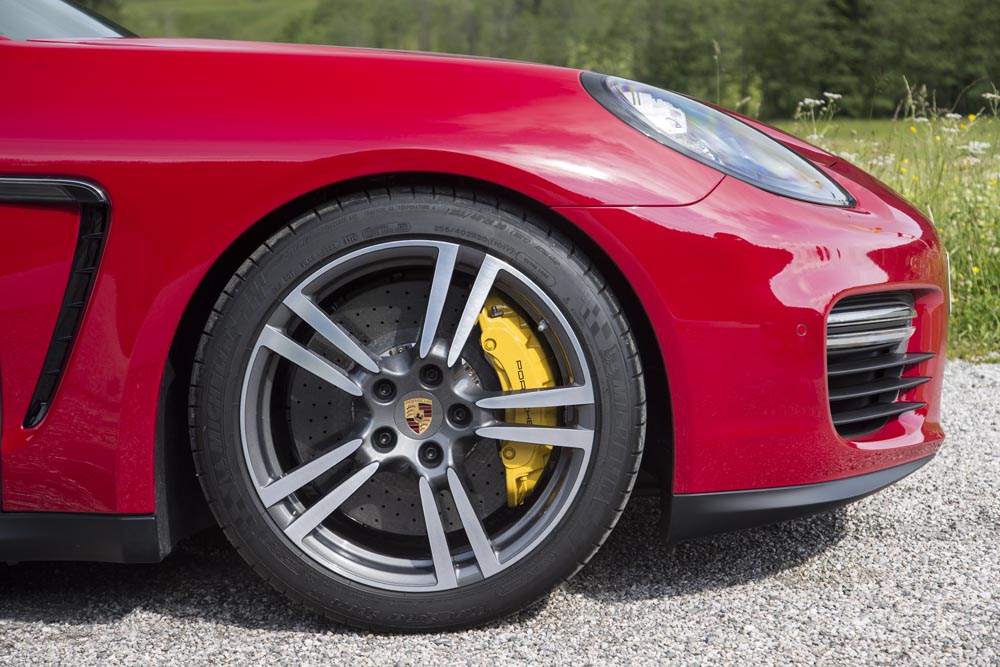
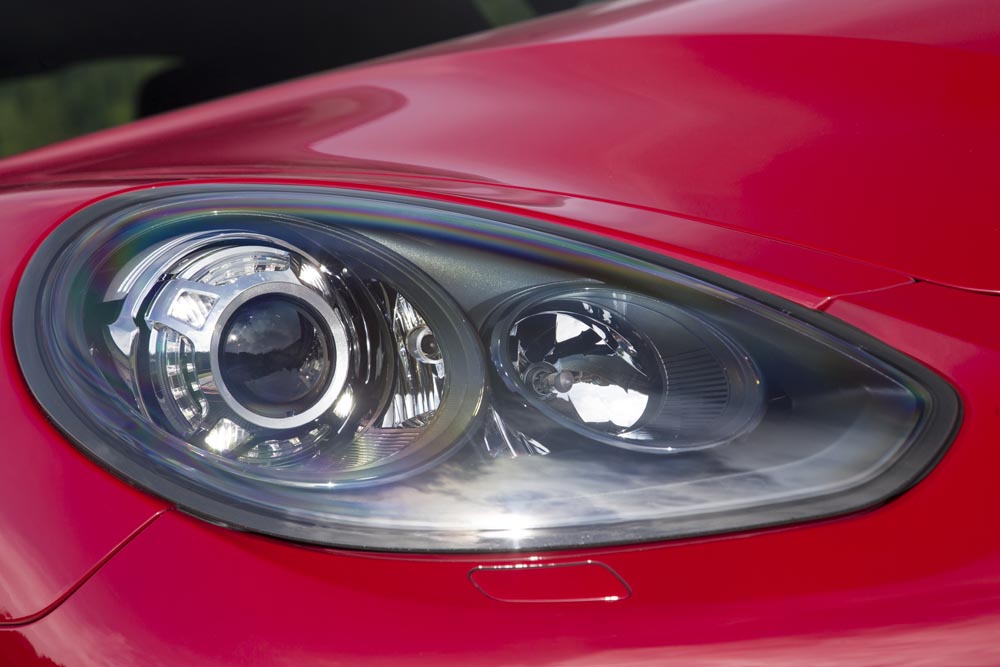
|









